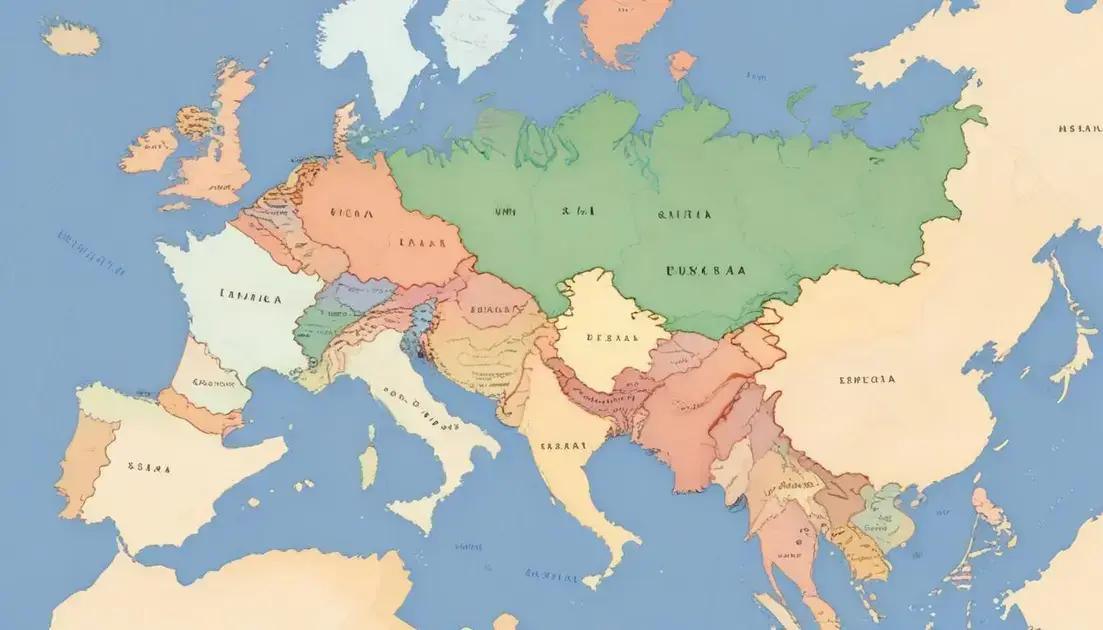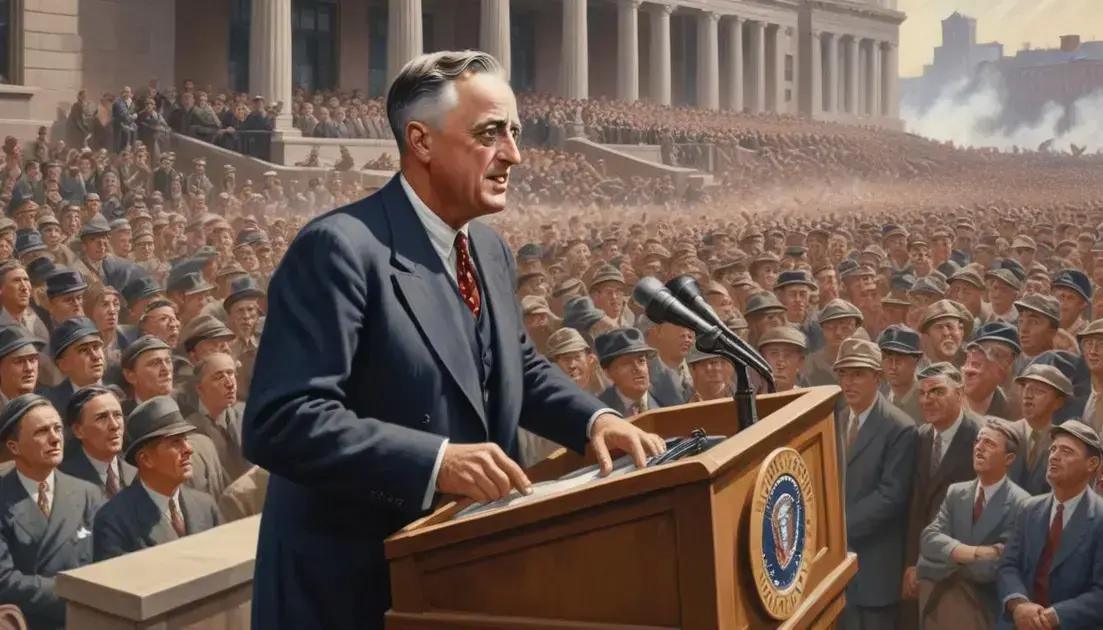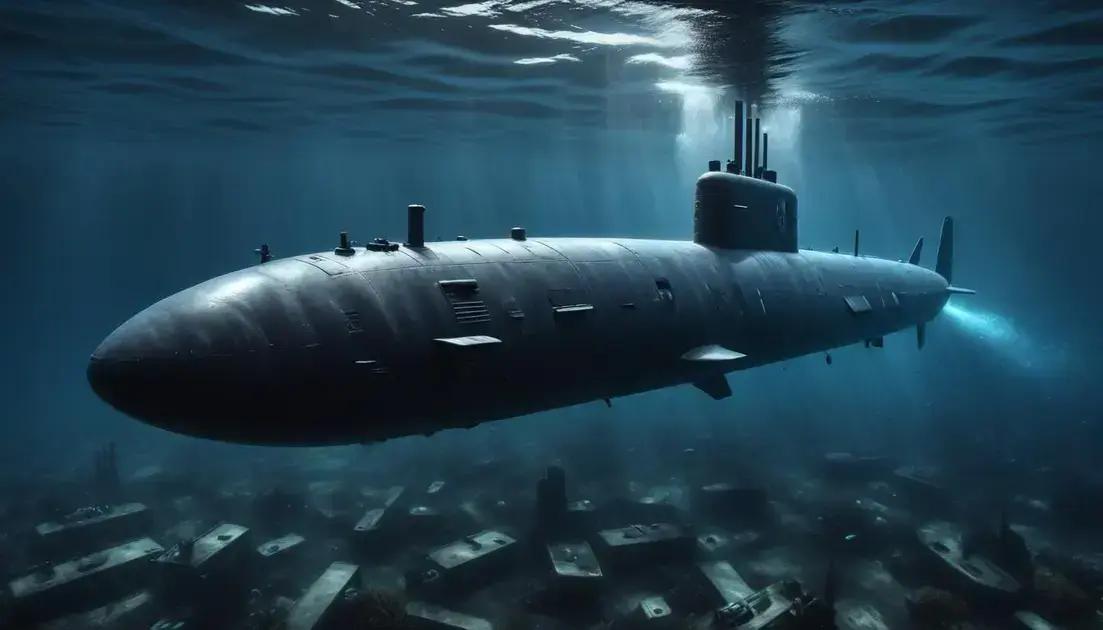
End of USSR and Emergence of CIS: New Post-Soviet Map
The collapse of the USSR in 1991 led to the formation of independent nations and the Commonwealth of Independent States (CIS). This period significantly impacted Eurasian politics and economies, as countries shifted from planned economies to market systems, facing various challenges. While some nations like Estonia thrived, others struggled with instability and corruption. The political landscape remains complex, with ongoing conflicts and alliances influenced by historical ties and aspirations for independence.
The USSR collapse in 1991 dramatically reshaped the map of Eurasia, giving rise to several independent states. Let’s dive into this historic transformation!
Historical Background
The historical background of the USSR collapse is important to understand the changes that followed. The Union of Soviet Socialist Republics, or USSR, was established in 1922. It brought together multiple republics under one government. The late 1980s saw many problems with the Soviet system.
People faced shortages of food and goods. The economy was not doing well. As dissatisfaction grew, so did calls for reform. Mikhail Gorbachev, the last leader of the USSR, introduced changes like perestroika and glasnost. These policies aimed to reform the economy and allow more freedom of expression.
However, instead of strengthening the USSR, these changes led to unrest. Different republics began to push for independence. In August 1991, a failed coup against Gorbachev sped up the collapse. It became clear that the USSR was falling apart.
By December 1991, the USSR officially dissolved. This marked the end of a major world power and gave birth to many new countries in the region. The shift from a single-party state to multiple independent nations changed the course of history in Eurasia.
Key Events Leading to Collapse
Many key events helped shape the path to the collapse. Prominent were economic troubles, political dissent, and the push for independence across various republics. Understanding this history helps us see the impact of the USSR collapse today.
The Collapse of the USSR
The collapse of the USSR was a major event in world history. This occurred mainly in 1991, when the Soviet Union officially fell apart. Many factors contributed to this collapse. Economic struggles and political unrest were key issues that the USSR faced.
In the 1980s, the economy was in trouble. There were shortages of goods and services. People grew tired of the limitations on their freedoms. Gorbachev’s reforms, named perestroika (restructuring) and glasnost (openness), aimed to fix these problems.
However, these changes didn’t work as intended. Instead, they sparked more demands for freedom and independence among republics. National movements gained strength across different regions. By the summer of 1991, tensions reached their peak when a coup attempt against Gorbachev took place.
This coup failed but weakened Gorbachev’s hold on power. Soon after, many republics declared their independence. On December 26, 1991, the USSR officially ceased to exist. The world watched as Russia and other former Soviet states began new journeys as independent nations.
The Impact of the Collapse
The collapse had significant effects, changing not just political boundaries but also affecting people’s lives. Former Soviet states faced challenges in establishing their governments and economies. Today, we see the long-lasting effects of these changes.
Formation of the CIS
The formation of the CIS, or Commonwealth of Independent States, happened after the collapse of the USSR. In December 1991, leaders from several former Soviet republics met to discuss their future. This was a critical moment for the newly independent states.
On December 8, 1991, Russia, Ukraine, and Belarus signed the Belozersk Agreement. They agreed to dissolve the Soviet Union and create the CIS. This agreement marked a new chapter for these countries. They wanted to work together while respecting each country’s independence.
Over time, more republics joined the CIS. By 1993, there were 12 member states. The CIS aimed to maintain economic and military cooperation among these countries. However, not all republics fully embraced the union. Some preferred to pursue their paths.
The CIS allowed countries to stay connected while seeking their interests. It also helped manage conflicts and issues that arose in the post-Soviet space. Today, the CIS remains, but its influence has changed over the years.
Challenges of the CIS
The formation of the CIS was not without challenges. Disputes sometimes erupted between member states. Each country had its priorities and political concerns. These factors often made cooperation difficult.
Impact on Eurasian Politics
The impact on Eurasian politics after the collapse of the USSR was profound and lasting. When the Soviet Union dissolved, many countries found themselves navigating new political landscapes. These changes led to the rise of new governments and political movements.
Many former Soviet republics sought to establish their identities and sovereignty. Nations like Ukraine and Georgia pushed for independence and reform. These shifts often caused tension with Russia, as it wanted to maintain influence over its neighbors.
In the early years, several conflict situations emerged. Issues like territory disputes and ethnic tensions became common. Countries struggled to find stability while trying to build democratic systems. Political alliances changed rapidly, as nations sought to align with either the West or remain close to Russia.
Russia, under leaders like Vladimir Putin, aimed to restore its role as a major power. This approach often involved reasserting influence over former Soviet states. In recent years, events like the annexation of Crimea showed Russia’s willingness to use military force to protect its interests.
New Alliances and Conflicts
The new political landscape in Eurasia led to shifting alliances. Some nations joined organizations like NATO, while others leaned towards Russia and the CIS. These choices often reflected historical ties, economic interests, or security needs.
Economic Transition in Former Soviet States
The economic transition in former Soviet states has been a complex process. After the USSR collapsed, many countries had to shift from a planned economy to a market economy. This change wasn’t easy for most of them.
Initially, many faced serious challenges. Industries that were once state-run suddenly struggled for survival. There were shortages and rising prices. These changes caused a lot of hardship for everyday people, as jobs became unstable.
Countries like Estonia and Lithuania adopted reforms quickly. They sought to integrate with Western markets and economies. This helped them stabilize faster than others. Their economies grew, attracting foreign investment.
In contrast, nations like Ukraine and Moldova faced more difficulties. Political instability and corruption hindered growth. These challenges slowed their transitions. They struggled to build strong economic foundations.
Over time, former Soviet states learned from each other. Some formed closer ties with the European Union. Others looked towards Russia for support. Each nation followed its path, impacting its people and businesses in various ways.
Current Economic Landscape
Today, the economic landscape in these countries varies greatly. Some, like Kazakhstan, have developed strong energy sectors. Others still deal with issues from their past. Overall, this transition shows how challenging yet important change can be.
Conclusion
In conclusion, the collapse of the USSR and the subsequent emergence of new nations have changed the face of Eurasia. The formation of the CIS allowed former Soviet states to maintain some connections while pursuing independence. Each country faced its own challenges in political and economic transitions.
As we look at the impact on Eurasian politics, it’s clear that conflicts and new alliances play a major role in shaping the region. Meanwhile, the economic transitions tell a story of struggle and growth, with some countries finding success and others still facing hurdles.
Overall, understanding this history is vital. It helps us see how past events influence the present and future. The journey of these nations shows the resilience of people and the complexity of change in a shifting world.


